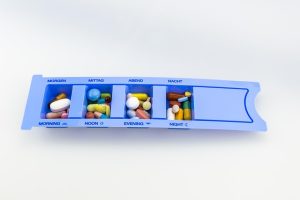Semaglutide, an innovative medication for type 2 diabetes management, mimics natural GLP-1 hormones to stimulate insulin production and reduce glucagon secretion, improving blood sugar control. Dosing is personalized based on factors like health, medical history, age, and treatment goals, with regular monitoring crucial for optimal outcomes. Starting doses are low and adjusted gradually, aiming for euglycemia (optimal glucose range). Side effects, including gastrointestinal issues and metabolic changes, impact dosing, requiring close monitoring and adjustments to caloric intake. Effective communication and collaboration between patients and healthcare providers ensure a dynamic, tailored treatment regimen using advanced technologies and data-driven approaches for improved glycemic control and minimized adverse effects.
“Semaglutide, a game-changing medication in diabetes management, offers significant benefits for controlling blood sugar levels. Understanding its role and optimizing semaglutide dosing is crucial for achieving glycemic control. This article delves into the factors influencing semaglutide dosing, from initial setup to monitoring strategies, providing insights on adjusting doses based on blood sugar levels. We explore common side effects and emphasize patient-provider communication, offering a comprehensive guide for personalized therapy in diabetes treatment.”
Understanding Semaglutide and Its Role in Diabetes Management

Semaglutide is a medication that has transformed diabetes management, especially for individuals with type 2 diabetes. It belongs to a class of drugs known as glucagon-like peptide-1 (GLP-1) receptor agonists, which work by mimicking the effects of a natural hormone in your body. This hormone stimulates insulin production and suppresses glucagon secretion, leading to improved blood sugar control. By understanding how semaglutide interacts with the body’s natural processes, healthcare professionals can effectively monitor and adjust dosing for optimal results.
The role of semaglutide in diabetes management is significant due to its ability to provide sustained blood sugar control. It helps reduce HbA1c levels (a measure of long-term blood sugar control) and supports weight loss, which is a crucial aspect of managing type 2 diabetes. The medication is typically administered via subcutaneous injection, and the dosing regimen varies based on individual patient needs. Monitoring semaglutide doses involves regular blood sugar testing and assessing side effects, ensuring that the treatment remains effective and safe for each patient.
Factors Influencing Semaglutide Dosing

Several factors play a crucial role in determining and adjusting semaglutide doses, making it an individualised process for each patient. Medical professionals consider a patient’s overall health, including their medical history, current medications, and any co-existing conditions. For instance, patients with kidney or liver disease might require lower dosages due to potential side effects and altered drug metabolism. Age is another significant variable; older adults may need smaller doses as they are more susceptible to certain semaglutide-related adverse effects.
Additionally, the goal of treatment influences dosing decisions. Whether it’s for type 2 diabetes management or weight loss, the desired outcome guides the prescription. Blood glucose levels and HbA1c targets are key indicators for diabetics, whereas weight loss programmes focus on achieving specific calorie deficits. Regular monitoring is essential to assess the effectiveness and make necessary adjustments, ensuring optimal outcomes while minimising potential risks associated with semaglutide therapy.
Initial Dosage Setup: Finding the Right Starting Point

When initiating treatment with semaglutide, finding the optimal starting dosage is crucial for effective and safe therapy. The initial dosage setup involves a careful consideration of various factors, including the patient’s medical history, current health status, and target blood sugar levels. Healthcare providers typically start with a low dose and gradually increase it to minimize the risk of adverse effects while achieving desired glycemic control.
This personalized approach ensures that each patient receives an appropriate semaglutide dosing regimen tailored to their unique needs. By monitoring closely and adjusting dosages accordingly, healthcare teams can help patients achieve and maintain stable blood sugar levels, ultimately improving their overall well-being and quality of life.
Monitoring Blood Sugar Levels: What to Look For

Monitoring blood sugar levels is a crucial aspect of managing semaglutide therapy. Patients should be vigilant in tracking their glucose readings regularly, typically through frequent self-testing with blood glucometers. The primary goal is to maintain blood sugar within the optimal range, often referred to as euglycemia, which minimizes the risk of both hyperglycemia (high blood sugar) and hypoglycemia (low blood sugar).
Key indicators to look for include consistent glucose levels within the target range over time. This involves analyzing trends in daily readings, especially after adjusting semaglutide doses. For instance, a steady decrease in fasting blood sugar levels suggests effective dosing, while sudden spikes or dips may indicate the need for adjustments. Patients should also be aware of symptoms associated with hypoglycemia, like sweating, dizziness, or tremors, as these could signal that their blood sugar is too low and require dose alterations.
Adjusting Dose Based on Glycemic Control

The effectiveness of semaglutide in managing type 2 diabetes relies heavily on appropriate dosing, which can be adjusted based on an individual’s glycemic control. Healthcare providers closely monitor patients’ blood sugar levels (HbA1c) to gauge the need for dose modifications. If HbA1c levels are consistently below target, a reduction in semaglutide dosage might be recommended to prevent hypoglycemia and potential side effects associated with excessive medication. Conversely, if glycemic control is suboptimal, increasing the dose can enhance insulin secretion and lower blood glucose.
Regular assessments of semaglutide dosing are crucial for optimizing diabetes management. By adjusting doses according to glycemic trends, healthcare professionals can tailor treatment plans, ensuring patients receive the most effective yet safe dosage. This dynamic approach to semaglutide therapy maximises its benefits while minimising risks.
Common Side Effects and Their Impact on Dosing

Semaglutide, a glucagon-like peptide-1 (GLP-1) receptor agonist, is commonly used for type 2 diabetes management. While it offers significant benefits in blood sugar control, patients may experience side effects that influence semaglutide dosing. Common adverse reactions include gastrointestinal issues like nausea, vomiting, and diarrhea, which can be particularly pronounced during the initial stages of treatment or when doses are adjusted. These symptoms often subside as the body adapts to the medication but may require temporary dose reductions for tolerability.
Additionally, semaglutide can cause various metabolic changes, including increased appetite and weight loss. Patients might feel compelled to adjust their caloric intake or physical activity levels to manage these effects. Close monitoring of semaglutide dosing during this period is crucial to balance the risks and benefits. Healthcare providers should consider individual patient characteristics and side effect profiles to optimize semaglutide dosing, ensuring effective blood sugar control while minimizing adverse experiences.
Communication Between Patient and Healthcare Provider

Effective communication between patients and healthcare providers is pivotal when monitoring and adjusting semaglutide doses. Patients should feel comfortable discussing any side effects or changes in their condition, as this real-time dialogue enables providers to make informed decisions about dosing adjustments. Regular check-ins allow for a dynamic approach to treatment, ensuring the semaglutide regimen remains optimized for individual patient needs.
Clear communication also involves educating patients on how to recognize when dose adjustments might be necessary. Healthcare providers can empower patients by teaching them to monitor key biomarkers and symptoms related to semaglutide dosing. This shared understanding fosters a collaborative environment, where both parties actively participate in managing the treatment process.
Future Considerations and Personalized Therapy

As we delve into the future of diabetes management, personalized therapy using semaglutide dosing becomes increasingly important. Advanced technologies and a deeper understanding of individual patient physiology will enable more precise adjustments to semaglutide doses, tailoring treatment to specific needs. This shift towards personalization promises improved glycemic control while minimizing adverse effects.
By integrating data from various sources, including wearable devices and continuous glucose monitors, healthcare providers can make informed decisions about semaglutide dosing. This data-driven approach allows for dynamic adjustments based on real-time patient responses, enhancing the overall effectiveness of therapy. As research progresses, the ability to predict and prevent complications associated with diabetes will further solidify semaglutide as a versatile and powerful tool in personalized healthcare.
